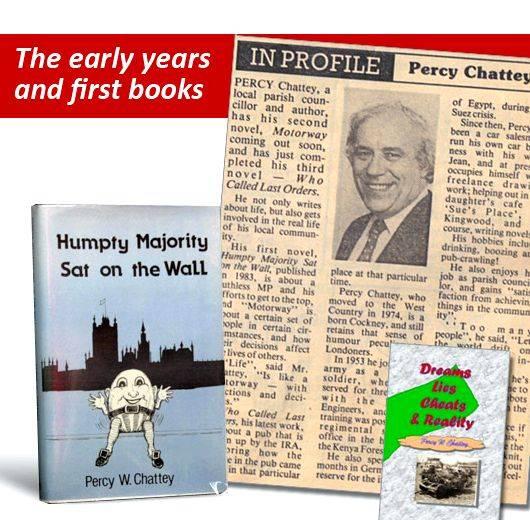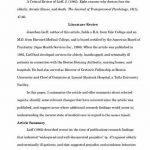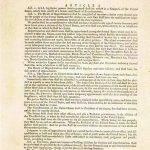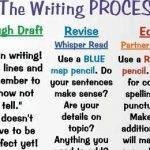Not everyone can write for kids, but everyone should want to: Children’s magazines can be a lucrative market. I’ve been paid as much as $1,000 for a 350-word article. You don’t have to have children, or even like them, to do this kind of writing – a childless, kid-hating friend of mine earned $1,100 on just two articles for juvenile magazines. And there are hundreds of freelance opportunities out there, from Sunday-school papers to glitzy, high-tech skateboard ‘zines. The market has grown noticeably in recent years. In 1985, the Institute for Children’s Literature identified 354 freelance markets. More recently, ICL listed nearly 600 such markets.
Writing for kids isn’t easy, of course. You have a tiny space in which to pack as much information as you can. You have to write in language they can understand. And you need fabulous ideas that will grab the attention of youngsters who are increasingly distracted by CD-ROM, cable television, and other competing media.
Non-fiction: Where the Action Is
Although many writers want to create enduring children’s fiction, they’re a lot more likely to sell a non-fiction piece. Juvenile magazines do publish a fair amount of short stories, but they’re generally outnumbered by articles and activities. And an increasing number of magazines focus on non-fiction topics like science, nature and technology. Where the sales are, where the interest is, is non-fiction, says Susan Tierney, editor of the industry newsletter Children’s Writer.
Interestingly, most editors want non-fiction that reads like well-written short stories.
The best juvenile magazines run articles that paint vivid pictures of historical events, or that use colorful, down-to-earth imagery to explain a scientific phenomenon. Profiles of famous people are no longer dry as dust: Readers can feel the wind on Amelia Earhart’s face, or hear the crash as Thomas Edison’s prototype light bulb shatters on the floor.
The personalities, the settings, all of the emotional resonance behind it can come out in non-fiction, Tierney says. There’s a kind of story quality to it, although it’s non-fiction. You don’t need to be a rocket scientist to write about the space program, or an entomologist to write about dung beetles. All you really need is a dedication to research, an ability to write clearly and concisely, and a respect for your young audience.
Writing for Children Today
You need to put aside any preconceived notions about childhood. The world has changed a lot since your own formative years. Children are a lot more sophisticated these days, and they want articles and stories that are relevant to their world. Writers’ guidelines now call for writing that reflects the realities of modern life: latchkey kids, for example, or single-parent families.
Pastimes and hobbies may be a lot different than you remember, too. Small-town kids may still visit the old swimming hole in the summer, but suburban and urban youngsters are more likely to play youth soccer or take to the streets with their skateboards. You need to familiarize yourself with what kids are doing if you want to write for them.
Borrow a friend’s children, teach a Sunday-school class, coach a sports team or eavesdrop at Chuck E. Cheese – anything to get an idea of what kids are like.
One thing you’ll notice is how computer-literate and visually savvy today’s children are. Keep that in mind before you sit down to write. Having been raised on video games and MTV, modern kids aren’t going to sit still for a story that doesn’t grab them right away. You should try and entice the reader in two sentences to get them into the story. You can’t take six sentences to get to the point, advises Therese Smith, an editor with American Girl.
How to entice them? With good writing, of course. We’re looking for the same things you look for in adult writing: a solid plot, interesting characters, humor, sharp detail, good research, says Christine Walske, an associate editor at Cricket Magazine group.
One of the most common mistakes, editors say, is writing down to children – being too sweet, too jaunty or too didactic. Children don’t want to be patronized or instructed. They’re very sensitive, as most people are, to being talked down to. If they feel they’re being lectured or condescended to, they’re insulted by that, and rightfully so, says Danny Lee, an editor with the Children’s Better Health Institute, which publishes seven juvenile magazines.
Editors would like to see more biography, history and hard science. It could be a simple article about some aspect of chemistry, or astronomy, or technology, says Walske. Nature is a perennial favorite, but most magazines already have backlogs of articles about Really Interesting Animals or Fascinating Natural Phenomena. It’s not that these ideas can’t make good reading, it’s that they need a new approach.
For example, Highlights recently published an article about a tiger in an animal sanctuary. Normally the magazine doesn’t use pieces set in zoos or sanctuaries. This piece was different because the writer relied heavily on her senses to create a picture for young readers: the sleekness of the tiger’s fur, the roughness of its tongue, its ever-changing moods. Rich Wallace, an editor at Highlights. said the piece worked because it was evocative. If it had been encyclopedic – Tigers live in Asia. They are endangered. – it would have been boring.
Even an article that offers lots of information needs to be written in an exciting, attention-getting way. Since slang or jargon tends to sound phony when used by adults, concentrate on unusual details and the best, newest research you can get. Intrigue the reader, and show him how much you care about the subject, whether it’s tiger fur or in-line skating. You wouldn’t want to write it in such a way that the kid realizes you’ve never even held a pair of in-line skates in your hand, says Lee.
The worst crime of all is to try to shoehorn in some kind of moral. If there’s a lesson to be learned, fine, but you have to show it, not tell it. Your average 9-year-old isn’t going to have an epiphany along the lines of Guess I should have listened to what Jesus/Grandma/my teacher/my best buddy said. And if your average 9-year-old read this kind of thing, he’s going to groan out loud: Give me a break! Like most of us, kids don’t read magazines for the morals – they read to be entertained. Adults seem to always want to put a message in a story, and kids can smell a message from a mile away, Walske warns.
Follow the Guidelines–and Then Some
Articles and stories need to be packed into very small spaces. And even if a magazine specifies 800 to 1,200 words, you shouldn’t feel compelled to use up all the allotted space. Editors love tight writing because children, particularly beginning readers, are more likely to finish a shorter piece than a daunting 1,000-worder. Marketing skills are as essential as writing skills. There’s no sense crafting a piece on the maternal instincts of wolverines only to find that there’s no market for such an article. And if you’re sending out ideas blindly, without the slightest bit of market research, you’re not just wasting postage – you’re wasting an editor’s time.
There is nothing more frustrating than receiving queries from writers who are clearly not familiar with the magazine they’re querying. They’re obviously not even looking at the magazine they’re trying to pitch work to, says Smith, of American Girl. She’s gotten ideas like the history of garlic, although AG is a magazine emphasizing fun activities for girls ages 7 to 12. A little market research would show, for instance, that Cricket doesn’t publish horror stories; that Highlights For Children steers clear of pop culture; that the Children’s Better Health Institute magazines don’t like stories that feature junk foods.
But it’s not enough to know what kind of articles a magazine wants. You also need to know what kind of writing they prefer. It’s well-nigh impossible to get a sense of a magazine’s voice from writer’s guidelines. If you’re going to write for children’s magazines, for goodness’ sake, READ them! says Sue Alexander, chairperson of the board at the Society for Children’s Book Writers and Illustrators. Seeing what’s been bought will give you an idea of what you might be able to sell. The stories and articles in children’s magazines may be colorful and exciting, or of a graceful, literary quality. In every story, you’ll notice that not a single word is wasted: each is carefully chosen for maximum impact. Try subscribing to some of the better magazines, such as Highlights, Cricket and Cobblestone. Or spend a couple of hours each month in the kids’ section of the library, reading every magazine on the shelves. Make the time to go through every back issue you can find there.
Magazines and books such as The Writer and Writer’s Market are good places to find other outlets for your work. Don’t overlook specialty publications, such as Children’s Writer or the Society of Children’s Book Writers and Illustrators Bulletin. To receive the SCBWI bulletin, you have to join the group – but there are advantages to doing so. The bulletin offers industry updates, lists of new markets, articles about the craft of writing, and notices of upcoming conferences and workshops.
If you’re unable to attend professional gatherings, you might be able to start your own writers’ group. (The SCBWI membership directory can put you in touch with other writers in your area.) Some colleges and universities offer children’s writing classes as well.
While special events and classes are all very helpful, the only way to become a successful children’s writer is to work at it. Some people believe they can get away with lazy writing because it’s only for kids. Nothing could be further from the truth. There are a lot of people who think that because they are writing for children, any old thing will do. I find that attitude very disconcerting, says Alexander. It really is the best that there is to be done. You’re writing for the future. They are the future of this country.
1999 by Donna Freedman. All rights reserved.
I hope you have found this page and this site useful. Please visit The Purple Crayon Bookstores page to find some recommended bookstores and to learn how to support this site while doing your usual online shopping. Thank you.






 Article writing jobs in bangalore for engineers
Article writing jobs in bangalore for engineers Sample article writing for class 8
Sample article writing for class 8 Writing reviews and journal articles pdf
Writing reviews and journal articles pdf Writing general interest articles of the constitution
Writing general interest articles of the constitution Articles on creative writing process
Articles on creative writing process






